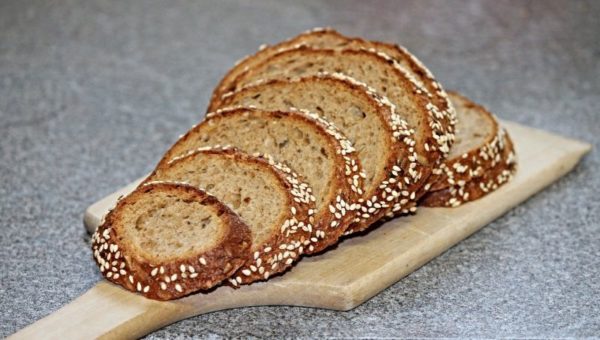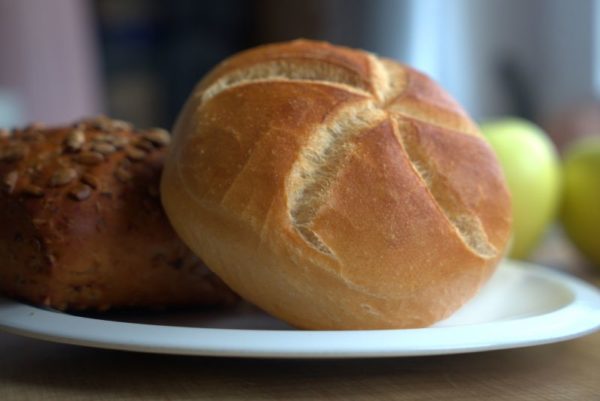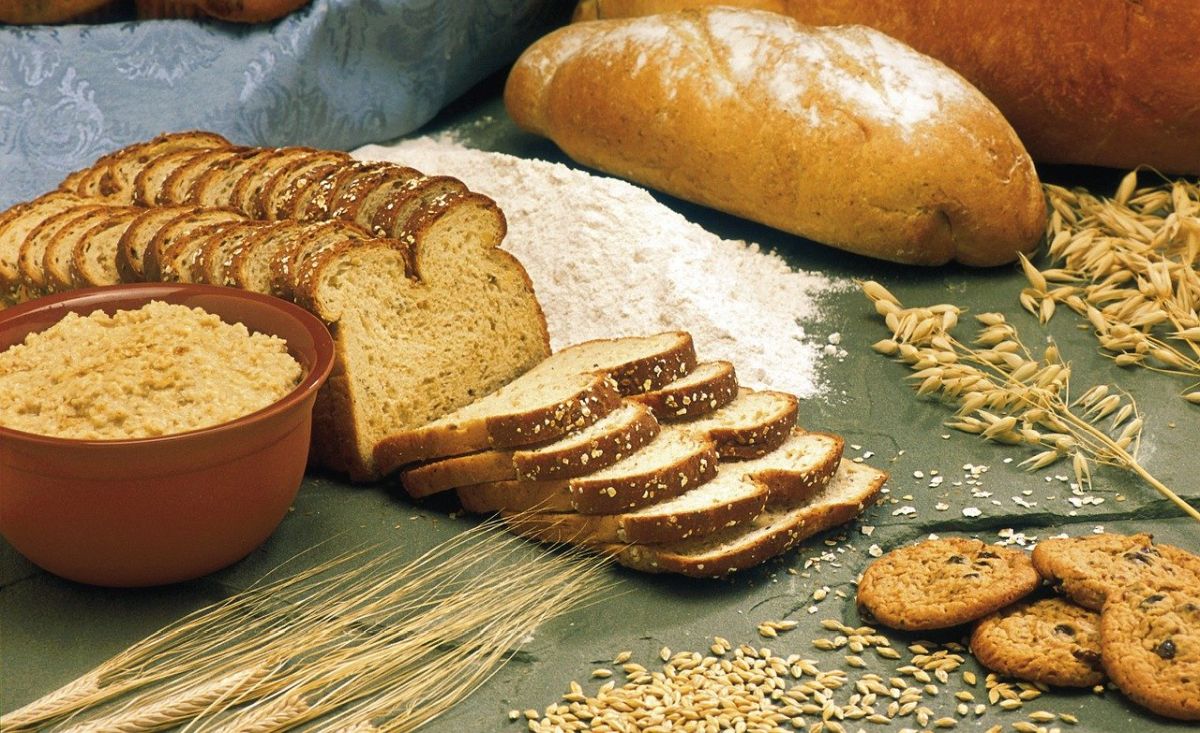Most likely, before being diagnosed with a fatty liver, bread was an important part of your diet. But can you keep eating it now that you have a fatty liver? That’s exactly what we’re going to talk about in today’s article!
Ideally, you should stop eating bread if you suffer from a fatty liver disease. Bread is high in carbs and calories – which are not good for the liver. It also is low in terms of nutritional value if compared to vegetables or fruits.
I’ll have to say that getting a short, clear answer like “yes, eat bread without worries” or “no, stop eating it!” is not really possible. I did my best above to provide a quick answer, but the truth is that there’s a big picture to consider.
This entire thing is more nuanced and there are many things to take into consideration. I would go as far as saying that the answer will be different for each person out there, but today I will help you decide if it’s a “Yes” or “No” in your case.
There are also some rules that you have to take into account no matter what and I’m here to cover them all in this article. So keep on reading to understand the complex situation behind eating bread with a fatty liver.
Bread & Fatty Liver

If you are ready to make high impact changes in your life and go all guns blazing against your fatty liver, then you should read just the three paragraphs below and nothing more.
Bread has a ton of carbs and refined ingredients that won’t help our liver heal faster.
Depending on the type of bread you choose, it will have more or less (or none of) added sugars, preservatives or other chemicals and flavors, all of which are unhealthy.
Therefore, if you can stop eating bread completely, you should. This is the healthiest way. Just do it and you will help your liver tremendously. End of story.
But…
Most people won’t find it that easy to stop eating bread, especially if your diet was heavily focused on eating it.
I personally didn’t stop eating bread completely and I still managed to reverse my fatty liver. This could mean that this is not – at least not in most cases – a thing you have to give up completely.
Sure, it would help a lot if you stopped having bread. But consuming it in moderation will, in most cases, not be that big of a problem.
Still, depending on the type of bread you used to eat, there are things to consider and huge changes to be made.
You will have to eat a lot less than you used to (unless you already eat tiny amounts) and you have to choose your bread carefully or, even better, bake your own healthy bread at home.
Or, even better, go for a much safer version of bread by eating the so called keto breads.
This is a low carb type of bread that remains yummy and fluffy without all the negatives of regular bread. Click here to check out KetoBreads and learn about this healthy alternative you have to try out!
Why is bread bad for a fatty liver?
There are probably thousands of articles claiming that bread is the root of all evil in this world.
And although bread is definitely not the healthiest thing you can bring into your diet, it’s not really that bad for most people out there.
White bread is, however, the worst of the pack. White bread is made with refined wheat flour, meaning that all the carbs it contains are easily absorbed, resulting in spikes of the blood sugar levels and providing little nutritional value.
Store brought white bread is also made with a lot of added chemicals and additives. One of the most harmful additions is plain old white sugar.
High fructose corn syrup or other unhealthy sweeteners can be thrown in the mix, making it even worse for our general health and especially for the liver.

To make things even worse, in order for the flour to have that unreal white, it is bleached.
This is usually done using chemicals which are unhealthy (some of them banned in the EU, for example).
Healthline goes into detail with the flour bleaching techniques and how unhealthy this is, so you should read that article as well if you want to get the whole scoop.
Whole wheat bread, on the other hand – as well as bread made from other types of whole wheat flour – contains complex carbohydrates which are digested slower and their ability to spike the blood sugar levels is lower.
Make sure to check out my recommended fatty liver-friendly recipes to make it easier for you to deal with the new lifestyle you should be living.
In other words, whole wheat flour is better. You can read more about it on Greatist for a really good overview of different types of whole wheat and which are better.
Whole wheat bread can also have a lot of unhealthy additives as well, so make sure that you read the labels to always know what’s inside the food you’re eating.
I say this because most of the darker bread in the US (and probably other countries) tricks you into believing that it’s made using whole wheat, but instead it’s colored with caramel or other similar stuff. This is why you should always read the list of ingredients!
Finally, bread has another problem that more and more people are trying to deal with: gluten.
Gluten has started to become enemy number 1 in the modern world and many people are trying to stop eating it.
So if you have Gluten Intolerance or Celiac disease, then you should definitely stop eating bread and remove gluten from your diet.
But many specialists say that, unless gluten is bad for you, you don’t really have to stop eating it just because that’s the trend.
So more good news for those who want to still be able to eat some bread when dieting! And maybe mix it with some potatoes every now and then.
The bottom line is that bread (especially white bread) is usually bad for your health as it has a ton of simple carbs and empty calories, many chemicals, preservatives and additives to make it look good and yummy, while the gluten it contains can be a real pain for those suffering of gluten intolerance.
Could you still eat bread, though?
Unless you are allergic to it, suffer from gluten intolerance or anything else that cuts bread off the list of foods you should eat, you can still eat a bit of bread, but choose it carefully and eat only small amounts of it!
First of all, reduce the portion size. Try to learn to eat without bread. Try to eat no more than 1 slice per meal and try to introduce as many meals as possible without any bread or similar products (crackers, cereal and so on).
I personally followed this rule and ate 1 or at most 2 slices of bread per meal and tried to keep the daily slices to a maximum of 3.
Might sound bad for some, but it’s definitely better than stopping completely. And you get used to it.
Second of all, stop eating white bread! This is the worst type of bread you can have. Switch to eating whole wheat bread instead.
There are a ton of options here, with various cereals to choose from, some tasting better than others.
My recommendation is to try a few and decide which one you like the most. Just make sure that whatever you choose is made with whole wheat.
There are a few other things you have to consider, too. You still want your bread without unnecessary and unhealthy additives.
You don’t want it to have sugar (in any form like fructose syrup, molasses or whatnot), no preservatives or additives.
Normally, food should only have three-four ingredients: flour, water, yeast and a bit of salt although the latter is not a must. Various types of seeds or flour are OK too.
So never forget the golden rule of thumb: always read the ingredients list! You will be surprised to see how unhealthy store-brought bread generally is!
In most places, it’s very difficult to find bread with just the three recommended ingredients and no preservatives or additives.
This is why it might be a good idea to start making your own bread at home. It’s very easy and I guarantee that you will absolutely love the taste – no store bread can compete with the real taste of fresh bread made at home.
You can even buy a bread machine if you don’t have time to do the mixing and baking yourself: you just add the ingredients there and the machine does the rest of the job.
This is actually the approach that we have taken and the entire family is happy.
We bought this bread machine (affiliate link) and we’re extremely satisfied. It’s an investment you should make too if you want to make sure that you eat the healthiest bread possible.
Even better, you can opt to make your own paleo friendly, keto bread. This is a type of bread (or anything like this, including pizza crust!) that is healthy and low in carbs. I recommend checking out the KetoBreads website for this.
Conclusion

My take when dealing with fatty liver is that balance and moderation are the key to reversing your condition.
Therefore, a bit of the healthiest possible bread will most likely not do a lot of harm – if any.
The whole grains it is made of contain fiber and are considered beneficial. Just keep reading the ingredients (unless you make your own bread at home) and keep the numbers of slices to a minimum.
Yes, if it is doable, you should definitely stop eating bread completely, especially if you can only buy it from stores. But most people find it very difficult to do and that’s OK.
As I said, I haven’t stopped having bread and I still managed to reverse my fatty liver. This proves that an overall balanced diet is a perfect choice.
If you cut bread off your diet and eat fries with bacon and round it up with a cake afterwards, you’re not winning your battle!
Of course, this is just my opinion and not medical advice. If you have doubts about this, consult your doctor and do exactly as they tell you to.

I was diagnosed with a fatty liver back in 2014 and managed to reverse it by mid-2015. Since then, I’ve been studying it, continuously updating my knowledge with the latest scientific findings and practical approaches to give others the help they need to reverse their condition.
My approach to managing fatty liver is holistic, balancing scientifically-backed information with real-life, practical advice based on personal, direct experience.
I am also the admin of the Fatty Liver Support Group on Facebook and the Fatty Liver Subreddit.


I normally just two slices of Brown Whole Grain Bread now. During the first two months i stopped eating it.
I am still slowly recovering 🙂
I think this is the best approach – completely stop eating for at least a couple of months, then slowly add it back in small portions. Keep it up!
Thank you for this article. I’m from Asia and the only kind of flour I take now is chapathi made out of atta flour. Is this ok to take? I have fatty liver stage 1.
After searching on Google, I found out that this is still wheat flour (whole wheat, fortunately), so what is written in this article should stand for it as well.
My hepatologist told me to stay away from all types of flours, including whole wheat, since they are still all high glycemic and high carb, which turned your liver into fat to begin with. All types of carbs will turn into sugar in the liver, however, more slowly, but it still happens. If you’re not allergic to nuts, use almond flour instead, or if you want to try a little healthier try to bake with quinoa flour. I haven’t tried quinoa flour for bread yet, and I am allergic to nuts & coconut, so that will leave either of those flours out.
Keep in mind, even quinoa flour has 22 grams of carbs in only 1/4 of a cup! Check those labels! Remember, just because it sounds like a healthy flour, doesn’t mean it is. You need to check the glycemic index.
Your article is based on Fatty Liver, what about Cirrhosis, would it be the same recommendation ?
I think that cirrhosis is a much more serious problem and a stricter diet should be followed. I don’t think bread can still be had – but for this, it would be best to talk to a doctor.
Thanks for this info! How do you cut your homemade bread to make sure you’re not having too much? And so you can then put it away to not have it out on the counter calling your name?
Well, this is something you’ll get used to eventually. Cut just the amount of slices (1-2) that you are going to eat, don’t slice the entire bread. Then hide it :))